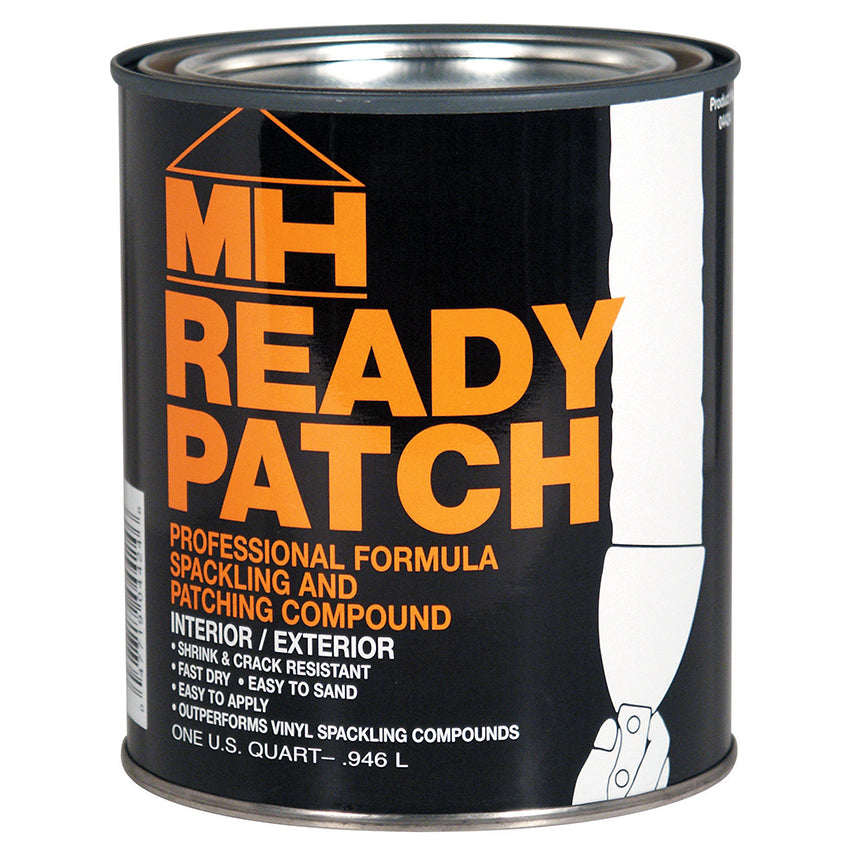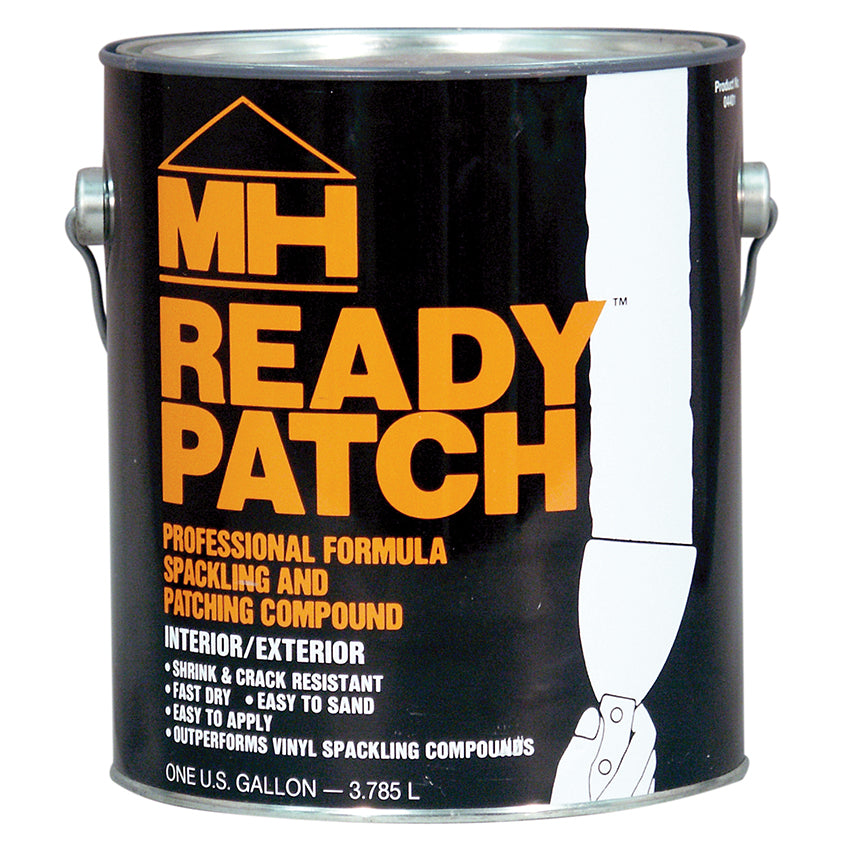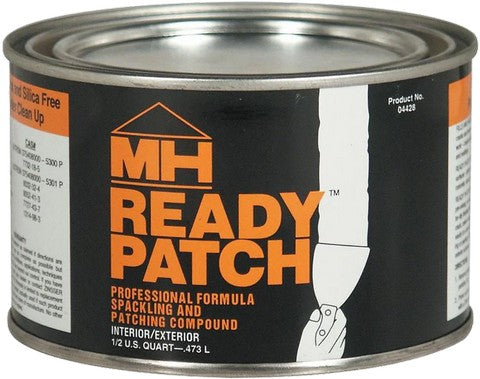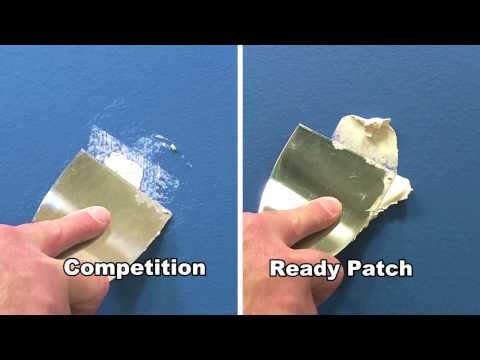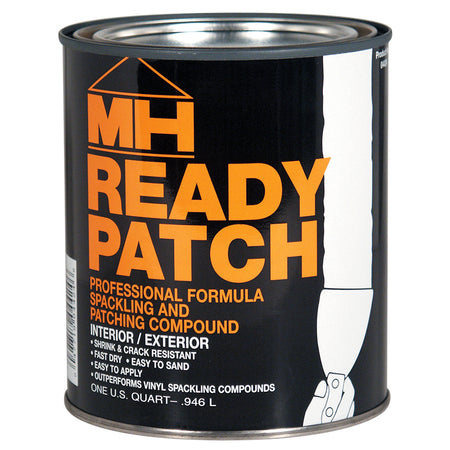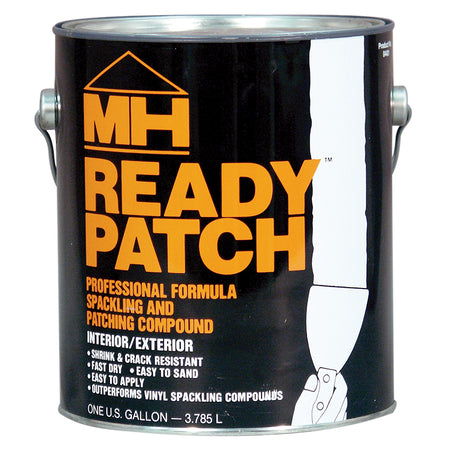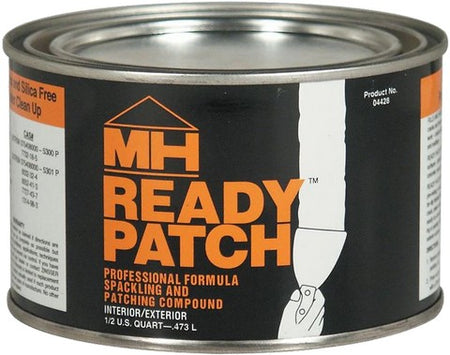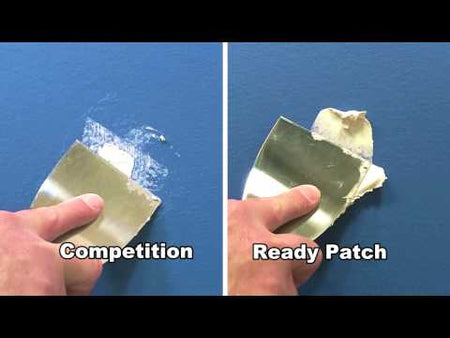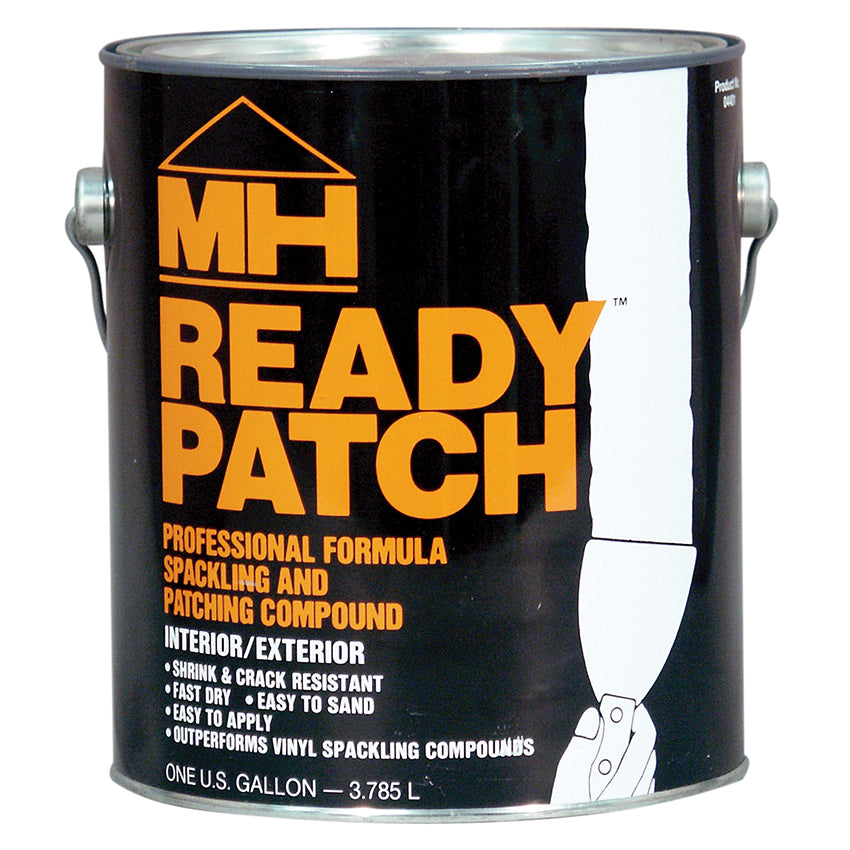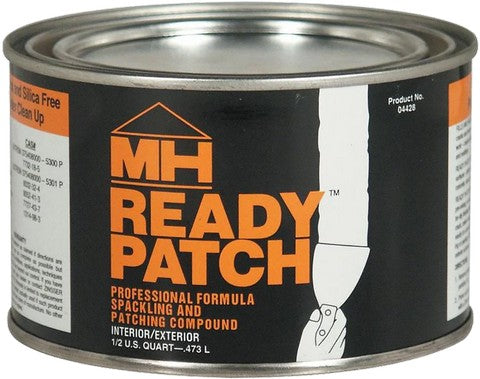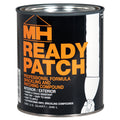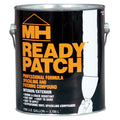Recommended Uses
Recommended for filling cracks, holes, gouges,
dents and surface imperfections on walls,
trim, doors, cabinets, furniture, siding, fascia, soffets, found
ations, and related interior and exterior architectural
substrates.
READY PATCH is ideal for filling dents
in metal doors and
skimcoating interior plaster and drywall. Not
recommended for skimcoating exterior surfaces.
Color/Tinting
READY PATCH is off-white in color. For applications
where it is necessary to differentiate the color of
the spackling paste from the color of the substrate,
add few drops of universal colorant and blend in thoroughly.
Substrates
READY PATCH is recommended for application to the
following substrates: new or previously painted wood
(including plywood, T-1-11, and pressure-
treated wood), hardboard, metal (including aluminum, iron, steel, copper, and
galvanized metal), drywall, cured plaster, masonry (including stucco, concrete
block, poured concrete, and brick). READY
PATCH will develop adhesion to glossy surfaces such as metal, tile, etc.
provided that such surfaces are clean and free of
contamination or poorly adhered existing finishes.
Application Data
Surface Preparation
Surfaces to be patched must be clean, dry, and in sound condition.
If necessary, wash thoroughly with detergent and water to remove dust,
dirt, grime, and other contaminants that can interfere with
adhesion. Rinse well and let dry before patching. Remove
any poorly adhering existing coatings by the best available
means, usually sanding and/or scraping. Remove loose, dried caulk
and replace where necessary.
Note:
Very deep holes requiring an epoxy-
based wood filler or concrete/cement patch should be filled
with these materials. Areas that are normally caulked should be filled
with the proper caulking material. Countersink exposed nail heads
and prime with an appropriate stain killing primer.
Application Requirements
Apply as many coats as necessary to fill the hole or imperfection
level with the surrounding surface.
Application Methods
READY PATCH should be applied with a clean putty or
spackling knife. In general use a 1” putty
knife for nail holes and cracks; a 2” knife for larger gouges,
a 3” to 6” knife for skimcoating exterior siding, etc. Spread
READY PATCH over the hole and remove excess until product
is smooth and flush with the surface. If holes are wide and
over ¼” deep two or more applications are recommended. If sanding is not
necessary or desired, READY PATCH may be
primed or painted when dry to the touch. Otherwise, wait until
product has fully dried before sanding smooth. Prime
patched areas before painting to prevent excessive
absorption of paint. For best results prime the entire
surface after spot priming patched areas. Note: READY
PATCH cures to a very hard, smooth finish and may be
more difficult to sand after drying overnight. Prime
patched areas before painting. Prime patched areas
before painting to prevent excessive absorption of paint.
For best results apply an appropriate primer to the entire
surface after spot priming patched areas.
Coverage
Approximately 13 sq. ft. per gallon applied at a thickness of 1/8 inch.
Application losses will vary according to the depth and extent of
the cavities being filled and the quantity of product used.
Application Conditions
Do not apply product if temperature or humidity is outside the following ranges:
Humidity: 0%–95% Temperature: 40º–90ºF (4º–32ºC)
Note that higher temperatures and lower humidity will accelerate
the dry time and cure time of the product while lower
temperatures and higher humidity will slow down the dry time and cure time.
Thinning
If thinning is necessary add water sparingly and mix thoroughly.
Cleanup
Clean up excess or dropped portions of product while soft
with a damp rag. If product dries it may be removed by
scraping, sanding, or washing. Clean tools in warm, soapy
water immediately after use. If product has dried
on application tool soak the tool overnight in a solution of detergent
and water. Scrub clean with a stiff brush.

